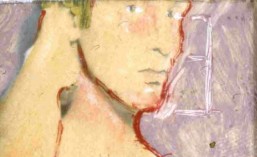Two dueling versions of the art world were in plain view recently, specially for Cuban-Americans. In Florida on the one hand, we saw the spectacle of Art Basel Miami Beach 2021 (along with NADA and various other satellite shows) and in Havana the 14th Biennial – all in the midst of Covid-19 and the Omicron variant – as if anybody cared. In the southern heart of American capitalism, huge crowds of ultra-rich investors descended upon the stalls of the 1% selected galleries to scoop up commodified goods sometimes recognized as artwork by other narratives. The haul was in the billions of dollars for mostly blue-chip artists and galleries. Meanwhile, back in arch-nemesis Havana, the communist overlords trying to soften their image by using art as political propaganda had their every-other-year efforts to promote local artists ‘salir por la culeta’, or backfire spectacularly as selected citizens declined to participate or protested the exhibit due to the government’s suppression and jailing of other dissident artists. Miami saw the likes of pop stars Leonard DiCaprio and Adam Levine, casino mogul Steve Wynn, and many other VIP’s entertained with exclusive sessions where they could select their visual investments prior to the common hoards. In Havana, hundreds signed an open letter calling for a boycott that included the likes of Robert Storr (isn’t he just a critic living comfortably in the US?) while another letter from Human Rights advocacy groups including Meryl Streep called for the Cuban government to “…stop its unrelenting abuses against artists…”. As was to be expected, nobody signed any letters objecting to the commodification and institutionalism of the affair in Miami but rather gave tacit approval to the money orgy it represented. There were also no letters from artists calling for an end to the obscene ‘sanctions’ imposed by the USA on Cuba for over 60 years. Miami was awash in celebrities and publicity – it was the greatest of successes – while Havana was ignored or criticized and kicked down some more notches in the global art hierarchy. Somehow the balance doesn’t seem quite right in this equation of the art world between the two centers of Cuban American culture. Attribute these diverse attitudes to obvious regional economic and political inequality. Cuban artists in Miami were marginalized per usual while Cuban American artists in Havana were non existent. Most of this can be rationalized as a result of the highly politicized polarity of the two cities but shouldn’t art be held above that? In any case, the art world proves once again to be as disgusting as usual in its real manifestation on both sides of the Caribbean.
